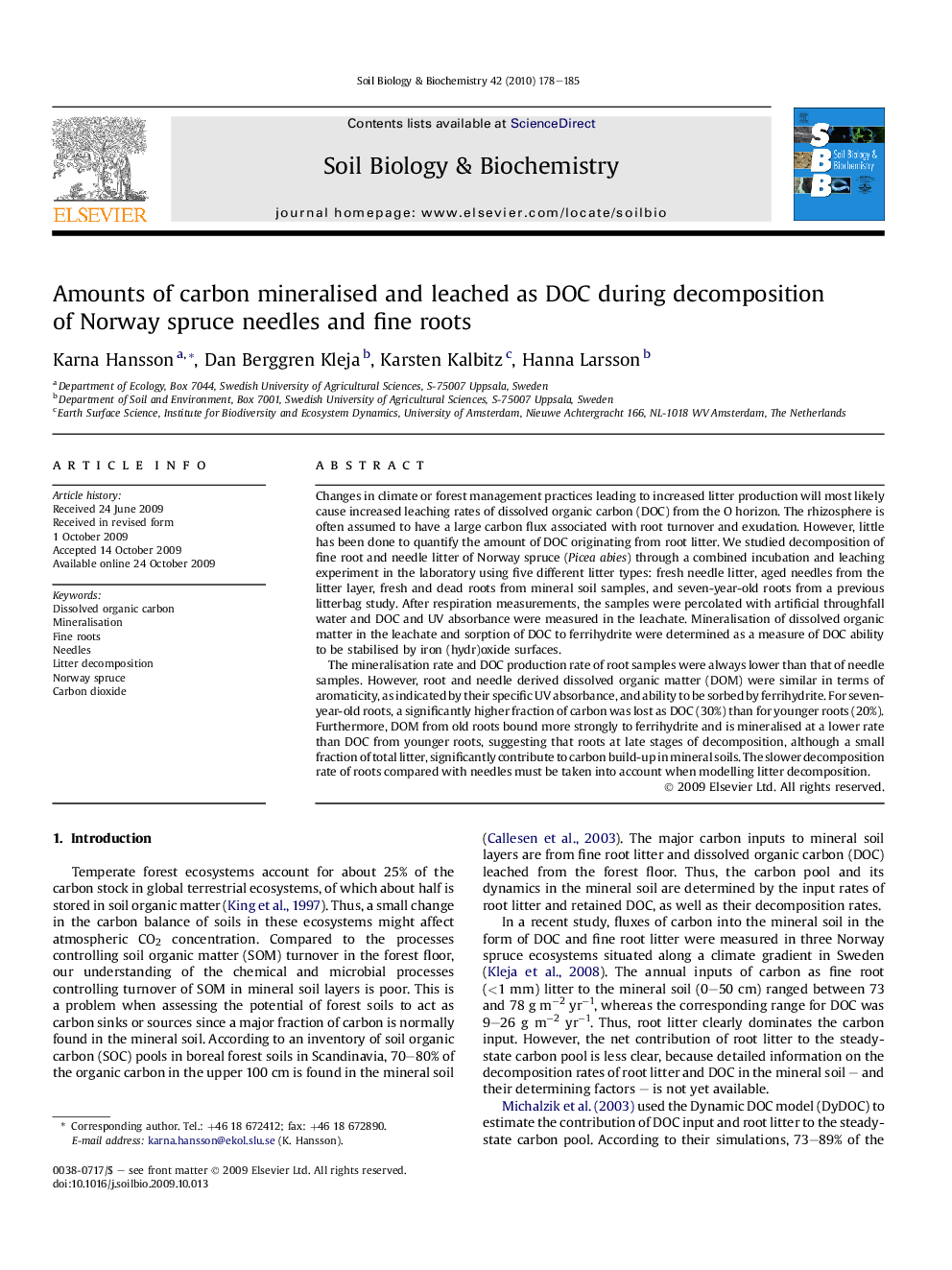| Article ID | Journal | Published Year | Pages | File Type |
|---|---|---|---|---|
| 2025125 | Soil Biology and Biochemistry | 2010 | 8 Pages |
Changes in climate or forest management practices leading to increased litter production will most likely cause increased leaching rates of dissolved organic carbon (DOC) from the O horizon. The rhizosphere is often assumed to have a large carbon flux associated with root turnover and exudation. However, little has been done to quantify the amount of DOC originating from root litter. We studied decomposition of fine root and needle litter of Norway spruce (Picea abies) through a combined incubation and leaching experiment in the laboratory using five different litter types: fresh needle litter, aged needles from the litter layer, fresh and dead roots from mineral soil samples, and seven-year-old roots from a previous litterbag study. After respiration measurements, the samples were percolated with artificial throughfall water and DOC and UV absorbance were measured in the leachate. Mineralisation of dissolved organic matter in the leachate and sorption of DOC to ferrihydrite were determined as a measure of DOC ability to be stabilised by iron (hydr)oxide surfaces.The mineralisation rate and DOC production rate of root samples were always lower than that of needle samples. However, root and needle derived dissolved organic matter (DOM) were similar in terms of aromaticity, as indicated by their specific UV absorbance, and ability to be sorbed by ferrihydrite. For seven-year-old roots, a significantly higher fraction of carbon was lost as DOC (30%) than for younger roots (20%). Furthermore, DOM from old roots bound more strongly to ferrihydrite and is mineralised at a lower rate than DOC from younger roots, suggesting that roots at late stages of decomposition, although a small fraction of total litter, significantly contribute to carbon build-up in mineral soils. The slower decomposition rate of roots compared with needles must be taken into account when modelling litter decomposition.
